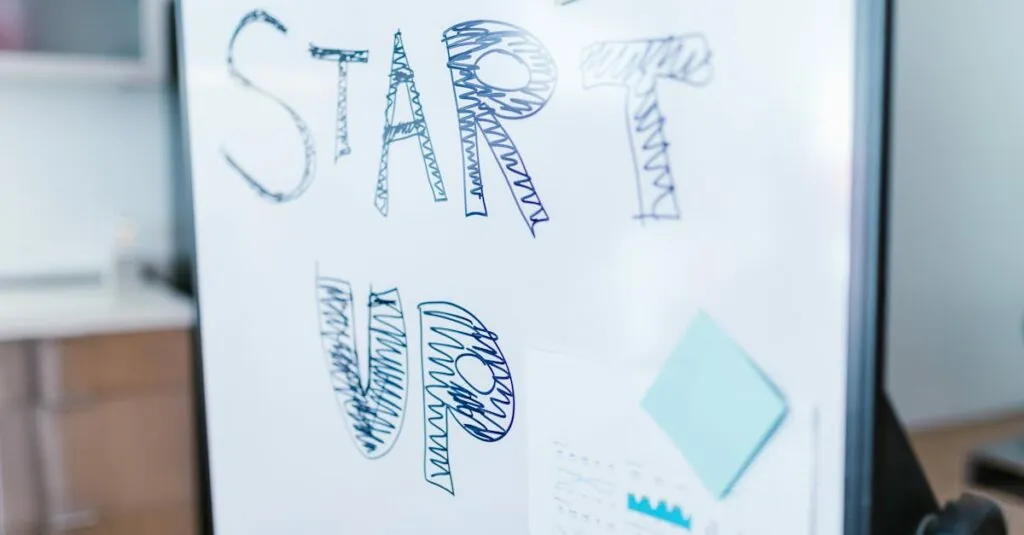Table of Contents
ToggleIn a world where challenges pop up like weeds in a garden, cultivating a growth mindset can be the secret weapon for success. Imagine transforming setbacks into stepping stones and viewing failures as mere plot twists in your personal story. Growth mindset activities are like the gym for your brain—flexing those mental muscles until they’re stronger and more resilient.
Picture this: instead of throwing in the towel when things get tough, you’re armed with strategies that turn obstacles into opportunities. Whether it’s a fun group exercise or a solo reflection, these activities can spark creativity and boost motivation. Ready to embrace the journey of growth? Let’s dive into some engaging activities that’ll have you laughing while you learn and evolving into the best version of yourself.
Overview of Growth Mindset Activity
Growth mindset activity focuses on developing resilience and adaptability. Engaging in these activities promotes cognitive flexibility, allowing individuals to approach challenges differently. Participants face specific tasks that encourage reflection on their thought processes. By analyzing their responses to difficulties, they gain insights into their beliefs about effort and ability.
Activities vary in type but often include interactive exercises, journaling prompts, and collaborative projects. Constructive feedback plays a critical role, reinforcing the idea that growth stems from effort. Individuals may explore scenarios where effort leads to improvement, challenging the misconception that talent alone drives success.
Incorporating these activities into daily routines enhances motivation and curiosity. Educators, parents, and team leaders can implement growth mindset activities within various contexts, including classrooms, workshops, and corporate training. Emphasis on celebrating small achievements builds confidence and strengthens commitment to personal development.
Tracking progress through measurable goals supports a deeper understanding of growth patterns. Documentation of efforts fosters accountability and highlights areas for further improvement. Individuals often report a greater sense of empowerment and optimism when actively pursuing a growth mindset.
Diverse resources, such as online platforms and books, provide additional support. Access to tools and structured activities ensures individuals maintain engagement. Prioritizing a growth mindset fosters an environment where challenges become stepping stones, and the learning journey is embraced.
Benefits of Growth Mindset Activity
Engaging in growth mindset activities brings numerous advantages. Participants experience profound improvements in their approach to learning and challenges.
Enhanced Learning Potential
Enhanced learning potential emerges as individuals embrace the growth mindset. This mindset encourages learners to view challenges as opportunities. Students exhibit increased curiosity and motivation when tackling complex tasks. As they strive for mastery, their willingness to ask questions and seek help grows. Engaging with diverse materials expands their knowledge base. Enhanced collaboration supports this journey, fostering idea exchange among peers. Ultimately, participants unlock greater cognitive flexibility, leading to improved retention and understanding.
Increased Resilience
Increased resilience becomes evident through consistent involvement in growth mindset activities. Participants learn to embrace setbacks rather than avoid them. Over time, they develop coping strategies to handle adversity effectively. Feedback fosters a culture of improvement, reinforcing that effort drives success. Individuals recognize that persistence yields greater results, leading to a positive outlook. Building emotional strength empowers learners to tackle future challenges head-on. Consistency in applying these concepts creates durable skills applicable across various aspects of life.
Types of Growth Mindset Activities
Engaging in growth mindset activities occurs in various settings. These activities enhance learning and foster resilience, encouraging individuals to embrace challenges.
Classroom-Based Activities
Classroom-based activities play a crucial role in promoting a growth mindset. Interactive discussions allow students to share their thoughts on failure and success, creating a safe space for exploration. Group projects stimulate collaboration, giving participants the chance to learn from each other. Teachers can implement journaling prompts, guiding students to reflect on personal growth and learning experiences. Incorporating regular feedback reinforces that effort and dedication drive improvement. Activities like role-playing scenarios expose students to diverse perspectives and problem-solving techniques. Through these methods, classrooms transform into environments that embrace learning as a journey.
Home-Based Activities
Home-based activities encourage continuous growth outside traditional settings. Family discussions about overcoming obstacles foster a supportive atmosphere at home. Setting personal goals empowers individuals to take ownership of their growth process. Creative projects, like art or writing, facilitate self-expression while encouraging risk-taking. Parents can introduce games that involve problem-solving, making challenges fun and engaging. Tracking progress through a shared family journal cultivates accountability and celebrates small successes. Engaging in these activities reinforces a culture of growth, turning homes into nurturing spaces for development.
Implementing Growth Mindset Activities
Incorporating activities that promote a growth mindset can significantly enhance resilience and adaptability in various settings. Engaging in these exercises fosters a positive learning environment, making personal development more enjoyable.
Tips for Educators
Encourage open dialogue during lessons. Students can share their thoughts on challenges and setbacks, creating a supportive atmosphere. Integrate interactive projects that require collaboration, allowing students to learn from one another. Use journaling prompts to facilitate self-reflection and insight into their learning experiences. Celebrate small wins in the classroom to boost morale and encourage continued effort. Incorporate feedback sessions, guiding students toward recognizing the value of persistence over perfection.
Tips for Parents
Create a home environment that emphasizes learning. Encourage family discussions about personal goals and challenges, fostering communication. Set aside time for creative projects that promote problem-solving skills. Recognize and celebrate children’s progress, no matter how minor, to build confidence. Model a growth mindset by sharing experiences of overcoming obstacles. Utilize resources such as books and online platforms to support growth mindset development at home. Finally, track progress through enjoyable family activities that reinforce shared growth experiences.
Embracing a growth mindset transforms challenges into opportunities for learning and development. Engaging in growth mindset activities not only enhances resilience but also fosters a culture of collaboration and creativity. By integrating these activities into daily routines, individuals can cultivate a more adaptable and optimistic approach to life.
Celebrating small victories along the way reinforces the idea that progress stems from effort and persistence. As educators and parents implement these strategies, they create environments that nurture growth and encourage exploration. Ultimately, adopting a growth mindset empowers individuals to face future challenges with confidence and enthusiasm.







